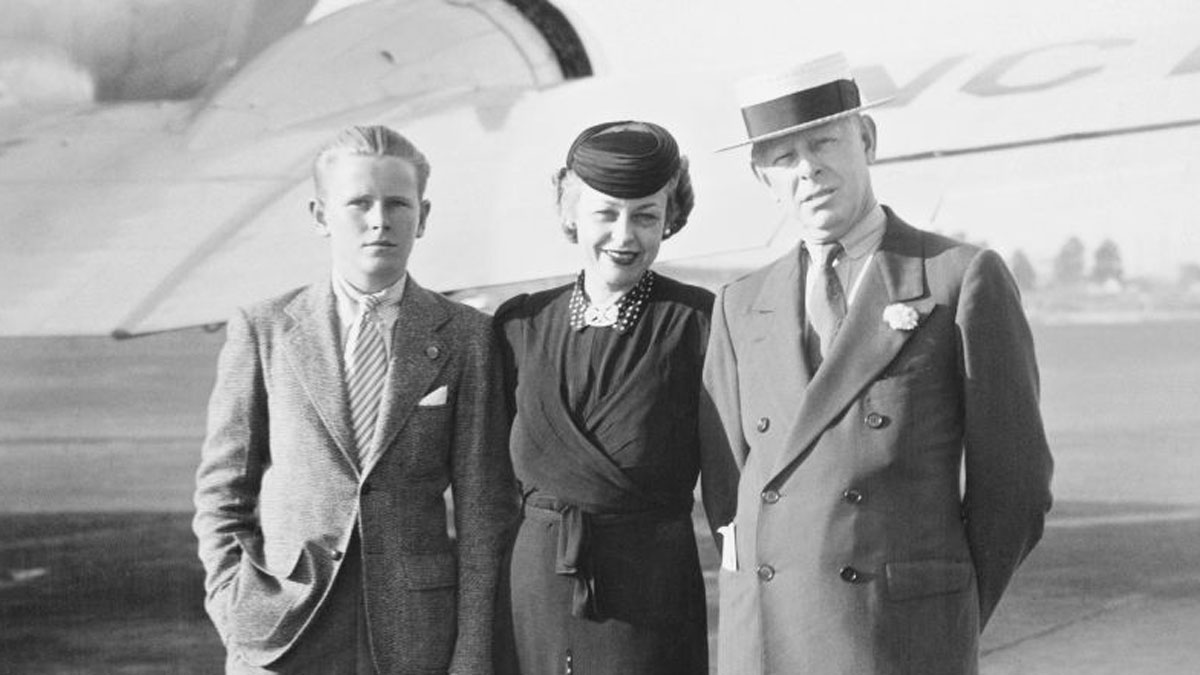The Secret Broker: Lessons from Jesse Livermore on having the courage to live large

Jesse Livermore, right, with wife #3 Harriet Metz Noble, in the middle. Picture: Getty Images
After 35 years of stockbroking for some of the biggest houses and investors in Australia and the UK, the Secret Broker is regaling Stockhead readers with his colourful war stories — from the trading floor to the dealer’s desk.
One of Charlie Munger’s quotes was that you should try every day to end your day a bit more wiser than when you got up.
What I didn’t expect was that my reading to gain a bit more knowledge in my life would end up with this week’s article including the words ‘knickerbocker’ and ‘piggly wiggly’.
I must admit, I would think of Munger’s quote after a big night out, having just woken with a hangover and then reached for the Panadol.
‘There,’ I would say, ‘I am now a bit wiser, as I should have taken them before I went to bed last night!’
Now, I must admit that me and Mrs Broker have given up watching TV in favour of spending much more time reading and using a charcoal grill to slowly cook our evening meals (which can take up to three hours).
We haven’t stopped the alcohol content, just the gogglebox content. Food intake is excellent and our knowledge intake is even more excellent.
So, I’m reading about the Godfather of Day Trading, Jesse Livermore.
What an absolute legend.
He turned US$10,000 into US$500,000 in 1924, when he was just 24 years old.
At one point in his life, he was the richest man in the world. Having been brought up in poverty, however, he did manage to go bankrupt four times, which is something that my brain instantly wants to skip over.
I only want to enjoy the fun bits, not the sad bits.
The morbid ones amongst you will just point out this bankruptcy fact and then continue to go on stock forums blaming everyone else for their woeful stock picking skills.
The fact that they bought the wrong stock at the wrong time becomes a problem with the exchange/management/directors/shortsellers/downrampers and their mistake is never something that they will ever own.
One of the greatest trading books ever is titled ‘Reminiscences of a Stock Operator’, which was first published in 1923 and is still in print today.
The book is based on interviews with Jesse Livermore but portrayed as a fictional character called Larry Livingston. It was written by Edwin Lefèvre.
It basically follows this trader around and includes the highlights of his trading days and the positions he was taking on.
It also includes the bits where he would go short, so yes folks, shorting is not a new thing. It was easier in those days as you never had to really settle a trade until you closed it out.
Livermore looked older than he was, so he managed to get a job in a broking house when he was 16 and he quickly learned how to read the ticker tapes.
He realised that if you studied them long enough, you could see that nothing was random and certain stocks would follow patterns and waves.
He used this knowledge to leverage himself up and go speculate big time.
In the lead-up to the great crash of 1929, he was shorting the market via more than 100 brokers to disguise what he was up to.
At one point he was down US$6m, however, by the autumn of 1929, things started to go his way and on the actual day of the crash, he closed out his positions and finished up US$100m.
Caught with your knockerbockers down
Before this win, he got involved in the panic of 1907, where he made US$1m in a single day. This is where the word knickerbocker starts to kick in.
The Knickerbocker Trust was a bank based in New York City that was, at one time, among the largest banks in the United States.
It was a central player in the Panic of 1907, after one of its founders had used the funds entrusted in it to try and corner the copper market (see again, there is nothing new about commodity manipulation) and upon cracks appearing in this speculation, there was a run on the bank and other bank stocks.
Being short made Jesse US$1m and then turning around and going long made him another US$3m.
In 1907! What a legend.
At one point, he had an office of 60 people working for him as he went around speculating on things.
He also played around a bit, having affairs here and there and lots of mistresses on the go and his lifestyle was large. Very large.
He became such a legend in trading that he would be paid handsomely for advice. One person who sought out his advice was a gentleman who went by the name of Clarence Saunders.
Clarence had listed his company on the market but he had become a target of short sellers, as he was a visionary and ahead of his time.
Even though he had been granted a patent on his revolutionary idea, the naysayers were spreading rumours as they shorted away.
So, Jesse was consulted and being the great trader that he was, he promptly went and caused a short squeeze, sending the shares from US$40 to US$120.
The patented idea was, wait for it, self-serve shops. And this company was the first in the world to introduce shopping trolleys.
Being a true outside-the-box thinker, Saunders (and this is another reason for the shorts) called his new shopping concept ‘Piggly Wiggly’.
When asked why he chose that name, he said ‘so someone would ask him that very question’!
This revolutionary vision went on to become an extremely successful franchise and help Clarence build a big pink mansion.
However, after a few failed marriages, Jesse was starting to lose his trading mojo. Sadly, he eventually ended up taking his own life.
It would appear that having found it easy making money out of the market, he could never find a time to end his speculative urges.
He once cornered the cotton market after WWII, which caused so much concern that the President of the United States called him in and asked him to stop what he was doing.
When the President asked him why he had cornered the market, he just said ‘it was to see if I could’.
From poverty, to the richest man in the world, to suicide.
What a great novel that would make for Mrs Broker to read, even though it is written in the form of roman-à-clef.
She would instantly recognise a few of the stories and then point out to me that Jesse really needed a handbrake in his life and not so many handbags. That was his downfall.
And she should know. I’m still here!
PS. My biggest personal win in one stock is $12,000 into $380,000, whilst on a two-week holiday in Noosa in 1999. Now I’m looking to corner the Panadol market, ahead of all these Xmas parties – Jesse Livermore style!
The Secret Broker can be found on Twitter here @SecretBrokerAU or on email at [email protected].
Feel free to contact him with your best stock tips and ideas.
UNLOCK INSIGHTS
Discover the untold stories of emerging ASX stocks.
Daily news and expert analysis, it's free to subscribe.
By proceeding, you confirm you understand that we handle personal information in accordance with our Privacy Policy.








